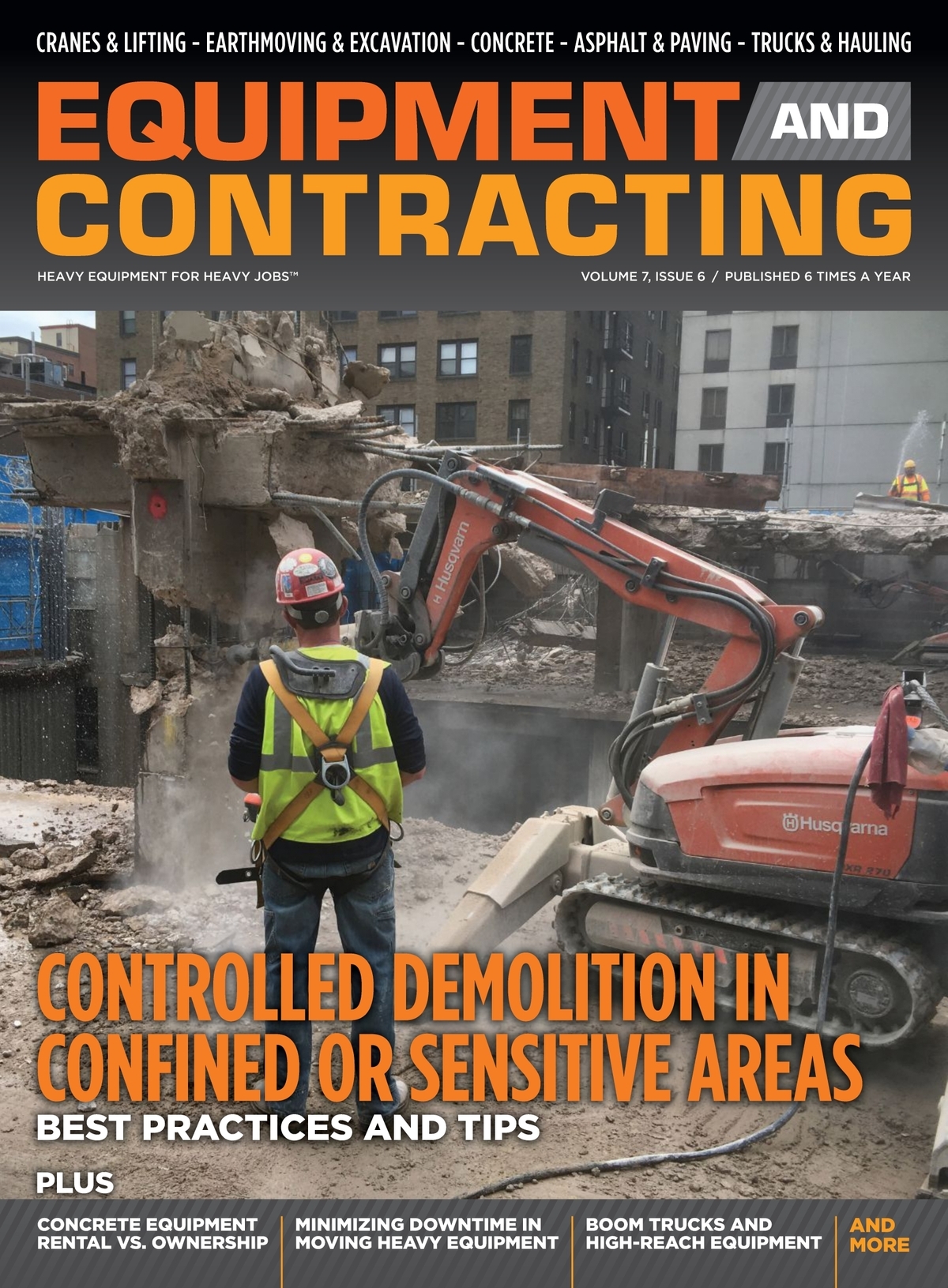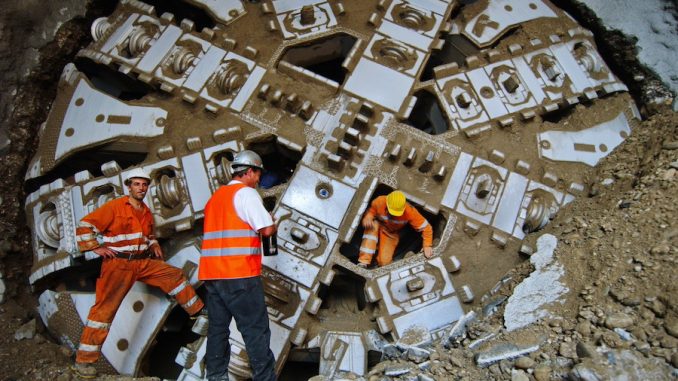
View the complete article here.
A tunnel is more than just space underground. It is a connector – of people, of communities, of countries. It can expand economic opportunities. But building a tunnel takes a long time. Tunnel Boring Machines (TBMs) have improved the speed at which these massive construction projects are completed. In this article we discuss the different types of TBMs and how they work.
The First Tunnel Boring Machine
The Thames tunnel was the first underwater tunnel to be completed. It took 18 years to build and was finally opened to the public in 1843. The work was possible with the use of a tunneling machine designed by engineer Marc Brunel and his father, Isambard Kingdom Brunel. Unlike today’s TBMs, the rock was removed manually. Each worker would stand in a cell of what was essentially an iron cage. The cage (also called a shield) was moved forward about six inches and the digging would continue.
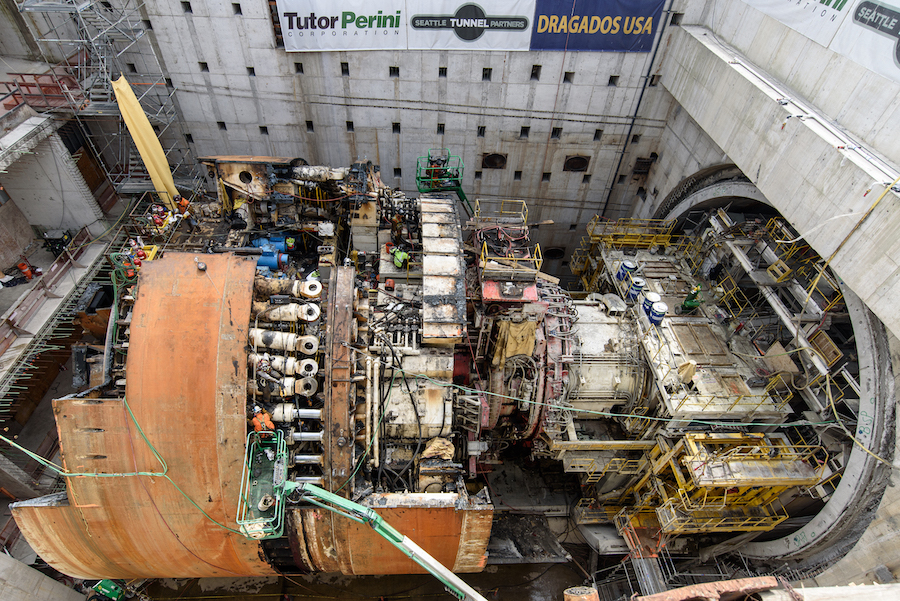
The Four Systems of a Tunnel Boring Machine
A tunnel boring machine has four basic systems:
Boring
The boring system cuts through the rock. It has a cutterhead mounted with disc cutters. The cutterhead rotates and presses the cutter discs against its face. This creates a slicing motion. The high pressure the cutterhead exerts is greater than the compressive strength of the rock and grinds it with relative ease. The type of cutterhead and disc cutters used is based upon the type of rock.
Thrust and clamping
The TBM’s thrusting and clamping system are responsible for moving the machine forward via hydraulic cylinders. Clamping restricts thrust as needed.
Muck-removal
The rock and soil removed by the cutterhead can be mixed with water or other substances to create a “muck” that is more readily removed. Typically a screw conveyer pulls the muck out to a standard conveyer belt where the material is ultimately taken outside of the tunnel and disposed of.
Support
The tunnel boring machine must be protected from the material falling around it as it grinds its way along. Support systems to protect the TBM from fault zones include pipes, grout injection, rock bolts, and freezing used over or in front of the cutterhead. A roofing shield support system may be used to protect workers who are behind the cutterhead as the TBM advances in fractured rock.

Major Types of Tunnel Boring Machines
There are two major classifications of TBMs: open shield and closed shield. Open shield TBMs can have a single shield or a double shield. This type of TBM only provides lateral support. Closed shield TBMs offer both lateral and frontal support.
Examples of Tunnel Boring Machines
Tunnel boring machines continue to get larger and more sophisticated. The Robbins Company is one of the major TBM manufacturers in the United States. In fact, the company’s founder, James Robbins, designed and manufactured the first modern tunnel boring machine in 1952. It was used in South Dakota’s Oahe Dam project. The Robbins Company categorizes five specific tunnel boring machines:
How a Tunnel Boring Machine Works
Main Beam tunnel boring machines are used to bore quickly through hard rock. They are an open type of TBM. The cutterhead is the same diameter as the tunnel. Hydraulic propel cylinders push the cutters into the hard rock as the cutterhead turns. Meanwhile a floating gripper system pushes against the walls of the tunnel. The gripper remains locked in position. The propel cylinders extend and the main beam moves the TBM forward. There is a belt conveyer in the main beam that moves muck from buckets inside the rotating cutterhead to the rear of the TBM. The propel cylinders retract which in turn re-positions the gripper assembly. The boring process continues after the grippers are extended and the rear legs are lifted.
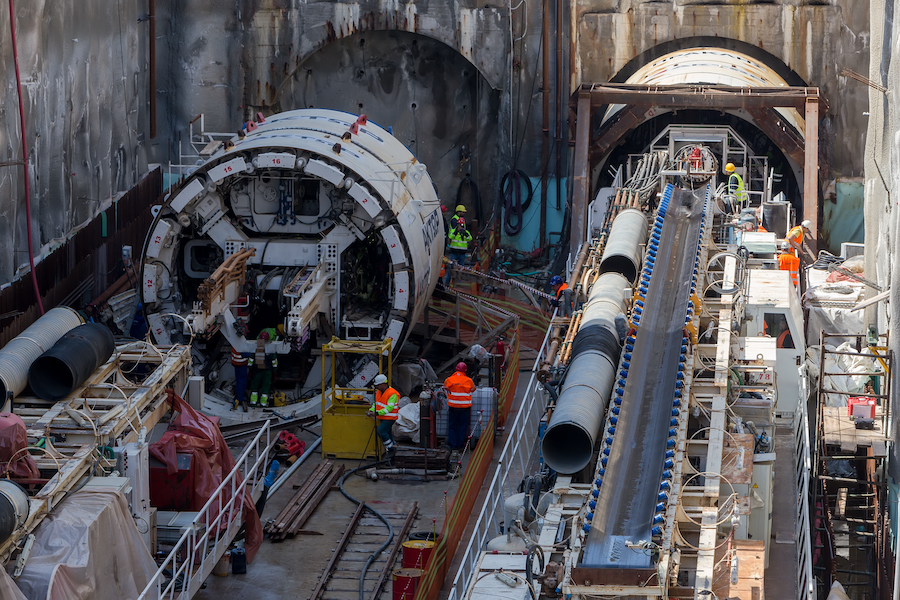
Double Shield
This open type TBM is used to tunnel through difficult soil at a comparable speed to a Main Beam machine. Although it’s called a Double Shield, it actually has three shields: a telescopic shield, a gripper shield, and a tail shield. The gripper shield pushes against the tunnel walls while the main propel cylinders thrust the cutterhead support and cutterhead forward. The telescopic shield extends as the machine moves and bores through the rock. The entire TBM is protected from the ground all around it. The machine simultaneously bores through the rock and erects the tunnel lining. This operation takes place within the tail shield.
Single Shield
The Single Shield TBM is used for massively fractured rock. The TBM body is enclosed in a shield that is slightly smaller than the tunnel itself. In this way, workers are shielded from broken rock until the tunnel lining is installed. The boring and tunnel lining erection are done sequentially.
Crossover Tunnel Boring Machines
Crossover TBMs are used for mixed ground tunneling. This one TBM replaces the need to use several machines to handle a variety of ground types. To work safely, however, Crossover TBMs require accurate geological data.
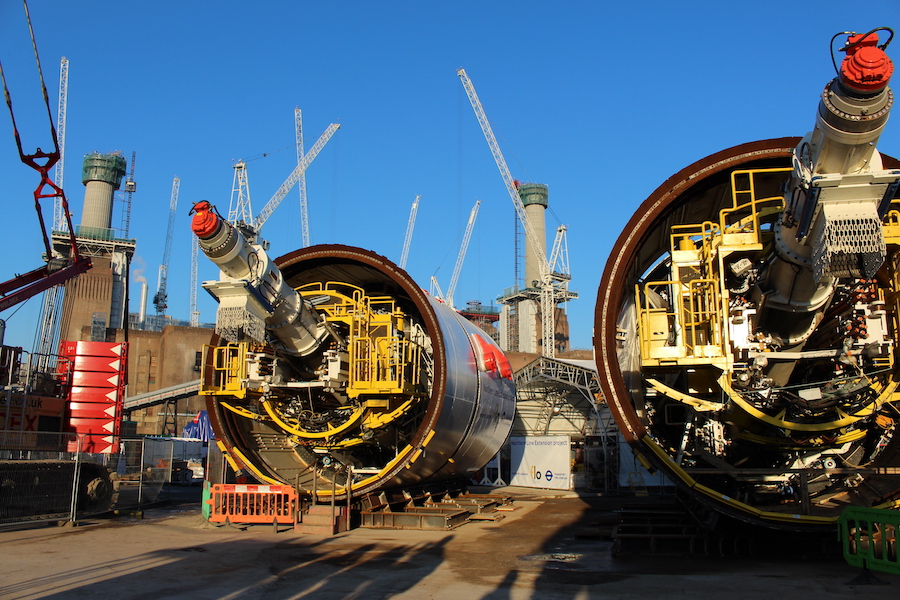
Earth Pressure Balance
Earth Pressure Balance machines are a closed type TBM. They are useful for boring through weathered rock or in soft soils under the water table. Particularly in urban areas where ground surface subsidence must be kept to a minimum. The Robbins Company EPB machine uses an articulated shield that can handle water inflow pressure up to 10 Bar. This TBM stabilizes the tunnel face and ground surface subsidence by adjusting the pressure inside the cutterhead chamber to keep it in balance with the pressure in front of the cutterhead. The tunnel lining is erected following each push. High pressure seals in the tail shield protect the machine against ground pressure.
The TBM Work Environment
A tunnel boring machine is a self-contained environment for the workers. It has facilities like offices, a kitchen and cafeteria, and restrooms. Like any work environment, is subject to state and federal rules and regulations.
Conclusion
Tunnel boring machines have allowed us to create connections between people and places that were once unthinkable. The machines grow ever larger and more sophisticated. But every TBM can be distilled down to four major systems – boring, thrust and clamping, muck removal, and support. The different types of TBMs handle a variety of soil situations and different environments – from underwater to under cities. Tunnel boring machines will continue to meet the changing needs of our complex world.
View the complete article here.
How do Tunnel Boring Machines (TBMs) work?
TBMs work by utilizing a cutterhead to bore through rock, supported by systems for thrust and clamping, muck removal, and overall structural support within a tunnel environment.
What are the major types of Tunnel Boring Machines?
There are various types of TBMs, including Main Beam TBMs for hard rock, Double Shield TBMs for difficult soil, Single Shield TBMs for fractured rock, Crossover TBMs for mixed ground tunneling, and Earth Pressure Balance TBMs for soft soils and urban areas.

